How to Gain Employee Loyalty to Survive the Staffing Crisis
By Kimberly Kafafian
As you’ve probably already heard, a record 4.5 million workers quit their jobs in December of 2021, and that month saw approximately 10.6 job openings. We aren’t really surprised by this latest report from the Bureau of Labor Statistics. As HR consultants, we’ve been seeing first-hand the impact the staffing crisis is having on our clients. And our clients aren’t alone as even we had turnover in December. Business owners and C-Suite employees alike have been turning to us for solutions on how to keep their workers from searching for greener pastures. As we help these businesses address their retention issues, one of the first questions we ask them is, “What are you doing to encourage loyalty?” They often look at us confused and say something like, “We offer competitive pay and generous benefits.” Our reply, “That’s just not enough.”
Even before the pandemic hit, millennials and Gen Z were looking for something more than just a paycheck when job searching. While they want fair pay, these generations also desire:
- A company with a mission
- Transparency around compensation
- Diversity, Inclusion, Equity and Belonging
- Meaningful work
- Flexible work arrangements
- Leaders committed to employee success
- A culture that values collaboration, fosters innovation, and provides opportunities for professional development
- A healthy work-life balance
And guess what? After living through the challenges of the pandemic, other generations of employees reassessed their work lives and came to the realization that they want the same things. So, they, along with their younger cohorts, started walking off their jobs to find employers who will provide them. This Great Resignation of millions upon millions of people has proven that a decent salary and nice benefits are not enough to garner employee loyalty – regardless of the age of your workforce.
10 Ways to Foster Employee Loyalty
If you want devoted employees who are committed to the company’s success and will stick with you for the long haul, take the time to create an employee centric culture. Here are some tips for doing so.
1. Promote a Purpose that Resonates with Employees
Today’s employees are seeking a sense of meaning from their work. They’re looking for employers with similar beliefs so that they can work together on a common purpose that has a positive impact. Especially after the last two years, and the shifting focus on ESG and sustainability, workers want to feel like they are making a difference in the world. So reassess your organization’s purpose and align it with the type of talent you want to attract.
2. Provide Flexibility
Flexibility in where we work and when we work has come to the forefront during the pandemic. Many employees have enjoyed working from home, as it has cut down on commuting time, providing a better work-life balance. Some are enjoying the freedom of working on their own time when they feel most productive, perhaps in the early morning hours or late at night. If possible, provide employees with the option of working from home, as well as during off hours. The goal is to cultivate a productive team, and if they are getting the work done, it shouldn’t matter if it is at the office or from 9-5.
3. Be Honest and Transparent
Loyal employees are invested employees. It’s important to be open and honest about plans, strategies and challenges. Being up front with your workforce, in good times and bad, makes them feel like they are part of the team and the bigger picture. Those feelings go a long way in gaining loyalty.
4. Communicate Clearly and Consistently
Silence and/or inconsistent messaging leads to mistrust. And that mistrust chips away at any dedication you may have fostered. Leaders need to bolster relationships by keeping teams in the loop on projects, goals, milestones, and more.
5. Encourage Professional Development
Today’s talent wants to connect with companies that care about career aspirations. We’ve been working on a career development project for one of our clients and it’s some of the most rewarding work we’ve done in years. Demonstrate to your workforce that you’re invested in their plans to grow professionally by showing real interest in their goals, defining a career development path, promoting educational training and courses, fostering a mentoring environment, and reminding them of the importance of their roles in the company.
6. Recognize Work and Achievements
I always say that simple words of recognition, such as telling someone they did a great job, can go a long way. Giving praise to workers in front of their colleagues takes it even one step further. You can also bolster feelings of pride by providing workers with plaques or trophies, physical gifts, experiential rewards, or monetary rewards (bonuses or gift cards).
7. Foster a Collaborative Work Environment
The most productive teams are those that collaborate and bounce ideas off one another. When teammates and leaders really listen to each other, innovative sparks can fly. Plus, this collaborative environment fosters relationships, which helps build loyalty to the team and the organization overall.
8. Demonstrate Trust
Stop micromanaging and give employees the autonomy they need to do their jobs. When employees feel leadership trusts them, they’re more motivated and productive. This cultivates feelings of mutual respect, which in turn makes them feel proud of where they work, making them more loyal to the organization. Demonstrating trust is particularly important with remote teams.
9. Enable Employees to Flourish
It’s leadership’s job to make sure employees are on a path of productivity and professional development. When obstacles stand in the way of successfully completing projects or achieving career goals, workers become frustrated and start considering other job options. So make sure to identify any barriers to workflow, put workers on teams and projects that best fit their skillsets, and make a real effort to have career development discussions with employees.
10. Offer Perks of Value to Your Workers
Employee benefits should extend beyond the traditional health, dental and vision care. Take stock of your workforce to understand the types of perks that would appeal to them. Maybe it’s more time off, better parental leave, tuition reimbursement, gym memberships, shopping discounts, pet insurance, wellness stipends, or unique on-site amenities. There are so many options, you need to find what will make your employees happy.
Gaining employee loyalty really comes down to showing your workforce that they are recognized, respected and valued. When you build your culture around that notion, the loyalty will naturally develop.
 En Español
En Español








